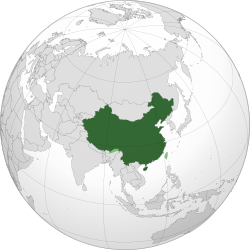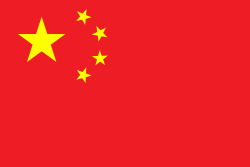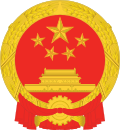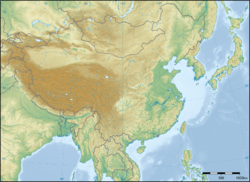

The following outline is provided as an overview of and topical guide to China:
Contents
- General reference
- Geography of China
- Environment of China
- Regions of China
- Demography of China
- Government and politics of China
- United front
- Branches of government
- Foreign relations of China
- Law and order in China
- Military of China
- Local government in China
- History of China
- Culture of China
- Sports in China
- Economy and infrastructure of China
- Education in China
- See also
- Notes
- References
- External links
The People's Republic of China is the most extensive country in East Asia and the third most extensive country in the world. [1] [note 1] With a population of over 1,400,000,000, it is the second most populous country in the world.
The Chinese Communist Party (CCP) has led the PRC under a one-party system since the state's establishment in 1949. The PRC is involved in a dispute over the political status of Taiwan. The CCP's rival during the Chinese Civil War, the Kuomintang (KMT), fled to Taiwan and surrounding islands after its defeat in 1949, claiming legitimacy over China, Mongolia, and Tuva while it was the ruling power of the Republic of China (ROC). The term "mainland China" is often used to denote the areas under PRC rule, but sometimes excludes its two special administrative regions: Hong Kong and Macau.
Because of its vast population, rapidly growing economy, and large research and development investments, China is considered an "emerging superpower". [2] [3] It has the world's second largest economy (largest in terms of purchasing power parity.) China is also a permanent member of the United Nations Security Council and Asia-Pacific Economic Cooperation. [4] [5] [6] [7] Since 1978, China's market-based economic reforms have brought the poverty rate down from 53% in 1981 to 8% by 2001. [8] However, China is now faced with a number of other socioeconomic problems, including an aging population, an increasing rural-urban income gap, and rapid environmental degradation. [9] [10]
China plays a major role in international trade. The country is the world's largest consumer of steel and concrete, using, respectively, a third and over a half of the world's supply of each. [11] Counting all products, China is the largest exporter and the second largest importer in the world. [12] [13]




